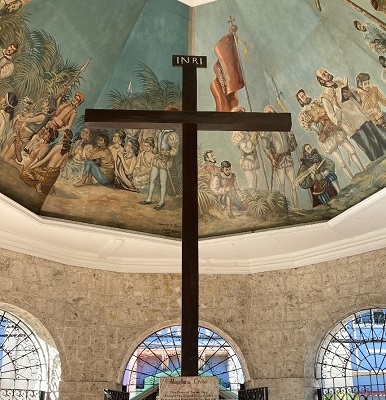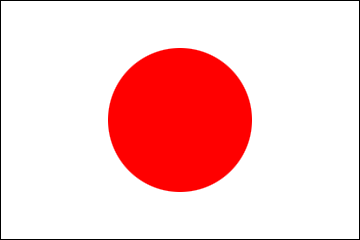Letter from Cebu (No.1) “Philippine history started in Cebu -The arrival of Magellan”
2022/6/1
Letter from Cebu (No.1)
“Philippine history started in Cebu -The arrival of Magellan”
“Philippine history started in Cebu -The arrival of Magellan”
Not many people in Japan may know that Philippine history started with the arrival of Ferdinand Magellan to Cebu in 1521, and the colonization of Cebu by Spanish explorer Miguel Lopez de Legaspi from Nueva Espaňa (now Mexico) in 1565.
I am ashamed to confess that I learned at an elementary school that Magellan was killed in the Philippines during his circumnavigation around the globe, and my knowledge stopped there.
So, let us explore the history as to how Magellan arrived in Cebu, and how Legaspi colonized Cebu and expanded Spanish settlements throughout the Philippines, setting Manila as the capital.
King Charles I of Spain ordered Magellan to explore the Moluccas, then known as the Spice Islands. The expedition led by Magellan, consisting of five ships, left the port of San Lucas de Barrameda on September 20, 1519, and sailed southward across the Atlantic. The Magellan expedition reach Port St. Juan (Julian) at the southern tip of South America in May (March), 1520. Magellan reached the southernmost tip of South America, and crossed a strait to the Pacific Ocean. The strait is now called the Strait of Magellan. Magellan crossed the Pacific and reached the Ladrones islands, now the Marianas, in March 1521. After obtaining fresh food and water Magellan navigated to the west, and reached Samar on March 17, 1521. Having rested, Magellan proceeded to the islet of Limasawa and stayed there for a week. Magellan learned there that there is a rich island called Cebu, and navigated to the west. Magellan reached Cebu on April 8, 1521.
Magellan told his Malay slave, Enrique, to assure the people of Cebu that they came as friends not as enemies. The Cebu chieftain, Rajah Humabon, welcomed the Spaniards, gifts were exchanged, and two parties sealed their friendship with a blood compact. On April 15, 1521, Mass was celebrated in Cebu. A cross was erected and some 800 natives were baptized, including Rajah Humabon and his wife, who was given the name Juana. This place is now known as Magellan Cross.
I am ashamed to confess that I learned at an elementary school that Magellan was killed in the Philippines during his circumnavigation around the globe, and my knowledge stopped there.
So, let us explore the history as to how Magellan arrived in Cebu, and how Legaspi colonized Cebu and expanded Spanish settlements throughout the Philippines, setting Manila as the capital.
King Charles I of Spain ordered Magellan to explore the Moluccas, then known as the Spice Islands. The expedition led by Magellan, consisting of five ships, left the port of San Lucas de Barrameda on September 20, 1519, and sailed southward across the Atlantic. The Magellan expedition reach Port St. Juan (Julian) at the southern tip of South America in May (March), 1520. Magellan reached the southernmost tip of South America, and crossed a strait to the Pacific Ocean. The strait is now called the Strait of Magellan. Magellan crossed the Pacific and reached the Ladrones islands, now the Marianas, in March 1521. After obtaining fresh food and water Magellan navigated to the west, and reached Samar on March 17, 1521. Having rested, Magellan proceeded to the islet of Limasawa and stayed there for a week. Magellan learned there that there is a rich island called Cebu, and navigated to the west. Magellan reached Cebu on April 8, 1521.
Magellan told his Malay slave, Enrique, to assure the people of Cebu that they came as friends not as enemies. The Cebu chieftain, Rajah Humabon, welcomed the Spaniards, gifts were exchanged, and two parties sealed their friendship with a blood compact. On April 15, 1521, Mass was celebrated in Cebu. A cross was erected and some 800 natives were baptized, including Rajah Humabon and his wife, who was given the name Juana. This place is now known as Magellan Cross.
Magellan Cross

Magellan presented Juana an image of the Infant Jesus. The Infant Jesus is now the Patron of Cebu, called Snr. Sto. Niño
Hideki YAMAJI, Consul General in Cebu
(reference)
“Philippine History: Expanded and Updated Edition”, by Teodoro A. Agoncillo, Fe B. Mangahas, C&E Publishing Inc., Quezon City, Philippines (2010)
“Over The Edge of the World: Magellan’s Terrifying of Circumnavigation of the Globe”, by Lawrence Bergreen, William Morrow and Company(2003)
“Over The Edge of the World: Magellan’s Terrifying of Circumnavigation of the Globe”, by Lawrence Bergreen, William Morrow and Company(2003)
(end)
